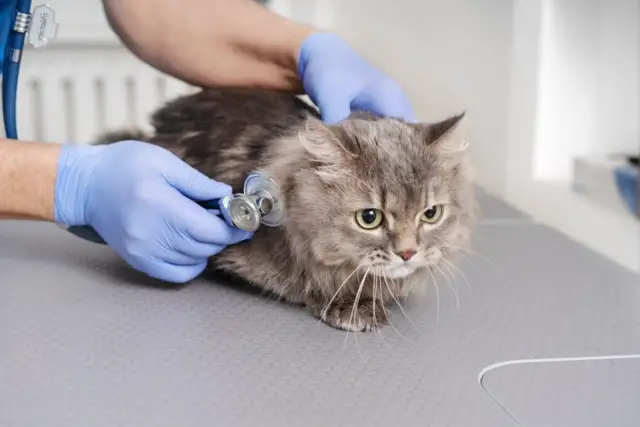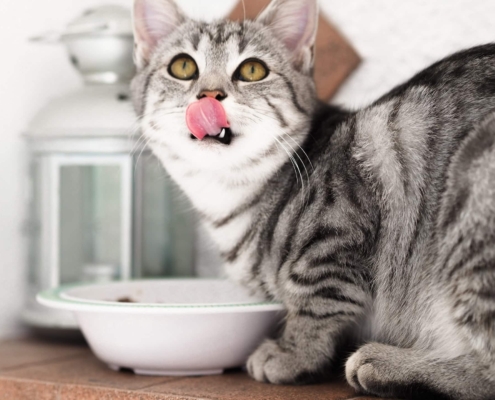
Toxoplasmosis is a common parasitic infection that can affect cats and other animals. In this comprehensive guide, you will learn about the causes, symptoms, diagnosis, and treatment options for toxoplasmosis in cats. Additionally, you will discover important tips on how to prevent the spread of this infection and keep your feline friend safe. If you are a cat owner or simply interested in learning more about feline health, this article is a must-read.
What is Toxoplasmosis in Cats?
Toxoplasmosis is an infection caused by the parasite Toxoplasma gondii. This parasite is capable of infecting a wide range of warm-blooded animals, including cats and humans. Cats are the only known host where the parasite can sexually reproduce. The infection is commonly transmitted through the ingestion of oocysts, which are shed in the feces of infected cats.
How Do Cats Get Toxoplasmosis?
Cats can acquire toxoplasmosis through various routes. The most common way is through the ingestion of oocysts present in the environment. This can occur when cats come into contact with contaminated soil, water, or raw meat. Additionally, cats can become infected through the consumption of infected prey, such as rodents or birds. It’s important to note that cats can also transmit the infection to their offspring during pregnancy or through infected milk while nursing.
Symptoms of Toxoplasmosis in Cats
Toxoplasmosis can cause a wide range of symptoms in infected cats. However, it’s important to note that many infected cats may not show any signs of illness. When symptoms do occur, they can vary in severity. Common symptoms of toxoplasmosis in cats include loss of appetite, weight loss, lethargy, fever, vomiting, diarrhea, and respiratory problems. In severe cases, the infection can affect the central nervous system, leading to neurological symptoms such as seizures or paralysis.
Diagnosing Toxoplasmosis in Cats
If you suspect your cat may have toxoplasmosis, it’s important to consult with a veterinarian for a proper diagnosis. The veterinarian will typically perform a thorough physical examination and obtain a detailed medical history. To confirm the presence of Toxoplasma gondii, a variety of diagnostic tests may be utilized. These tests can include blood tests to detect the presence of antibodies or DNA of the parasite, as well as fecal examinations to identify oocysts.
Treatment Options for Toxoplasmosis in Cats
The treatment of toxoplasmosis in cats will depend on the severity of the infection and the overall health of the cat. In mild cases, supportive care may be sufficient, including the administration of fluids, anti-inflammatory medications, and a nutritious diet. In more severe cases, specific antiparasitic medications may be prescribed to kill the parasite. It’s important to follow the veterinarian’s instructions carefully and complete the full course of treatment to ensure the infection is properly eradicated.
Preventing Toxoplasmosis in Cats
Preventing toxoplasmosis in cats is crucial for the health of your feline friend and for reducing the risk of transmission to humans. Here are some important measures you can take:
- Keep your cat indoors to minimize exposure to infected prey and contaminated environments.
- Feed your cat a balanced and nutritious diet to maintain a strong immune system.
- Provide clean and fresh water daily to prevent your cat from drinking from potentially contaminated sources.
- Keep litter boxes clean and dispose of feces properly. Wear gloves and wash your hands thoroughly after handling litter.
- Avoid feeding your cat raw or undercooked meat, as it may contain Toxoplasma gondii.
How to Keep Your Feline Friend Safe from Toxoplasmosis
In addition to preventing toxoplasmosis, there are other steps you can take to ensure the overall health and well-being of your cat. Regular veterinary check-ups, vaccinations, and a balanced diet are essential for maintaining a healthy immune system. Additionally, providing your cat with a stimulating environment, regular exercise, and plenty of love and attention will contribute to their overall happiness and well-being.
Cleaning Tips for Cat Owners to Prevent Toxoplasmosis
Proper hygiene practices are crucial for preventing the spread of toxoplasmosis. Here are some cleaning tips for cat owners:
- Wear disposable gloves when cleaning litter boxes or handling potentially contaminated materials.
- Clean litter boxes daily, using hot water and a mild detergent. Rinse thoroughly and dry completely before adding fresh litter.
- Wash your hands thoroughly with soap and water after handling your cat, cleaning litter boxes, or coming into contact with potentially contaminated surfaces.
- Avoid contact with your face and mouth while cleaning or handling potentially contaminated materials.
- Disinfect surfaces regularly, especially those that come into contact with your cat or their feces. Use a disinfectant that is effective against Toxoplasma gondii.
Other Diseases that can be Transmitted from Cats to Humans
While toxoplasmosis is one of the most well-known diseases that can be transmitted from cats to humans, there are other potential infections to be aware of. These include:
- Cat Scratch Disease: Caused by the bacterium Bartonella henselae, this disease can be transmitted through cat scratches or bites.
- Roundworm Infection: Cats can harbor roundworms, and humans can become infected through the ingestion of contaminated soil or feces.
- Ringworm: This fungal infection can be transmitted through direct contact with an infected cat’s skin or fur.
- Salmonellosis: Cats can become carriers of Salmonella bacteria, which can be transmitted to humans through contact with infected feces or contaminated surfaces.
Conclusion
Toxoplasmosis is a common parasitic infection that can affect cats and potentially be transmitted to humans. By understanding the causes, symptoms, treatment options, and preventive measures, you can ensure the health and safety of your feline friend. Remember to consult with a veterinarian if you suspect your cat may have toxoplasmosis or any other health concerns. By taking proactive measures and practicing good hygiene, you can enjoy a happy and healthy relationship with your beloved cat.
If you enjoyed my article, I would appreciate you sharing it with your network.

Sima Ndlebe
Sima writes for CatBuzz. He is interested in Cats, Health and Fitness, and Entrepreneurship.
Published: 11 October 2023
Related Articles
Disclaimer
The content found on CatBuzz.org is presented on an "as is" basis and is intended for general consumer information and education purposes only. Any utilization of this information is voluntary and solely at the user's own risk.
None of the articles or content should be regarded as, or used in place of, veterinary medical advice, diagnosis, or treatment. The information provided on the website is purely for educational and informational intentions and should not be considered a substitute for professional guidance from a veterinarian or other qualified expert. The articles are designed to inform consumers about veterinary healthcare and medical matters that may impact their cat's daily life. It should be noted that this website and its services do not constitute the practice of any form of veterinary medical advice, diagnosis, or treatment. CatBuzz.org explicitly disclaims any liability for any direct or indirect damages or losses that may arise from the use of or reliance on the information contained within the content.
Consumers must consult a veterinarian, veterinary specialist, or another qualified veterinary healthcare provider when seeking advice regarding their cat's health or medical conditions. It is important not to ignore, avoid, or postpone seeking medical advice from a veterinarian or other qualified veterinary healthcare provider solely based on information obtained from this website. If you believe that your cat may be experiencing a medical issue or condition, it is imperative to promptly contact a qualified veterinary healthcare professional.



